As businesses become more dependent on technology to support operations and meet customer demands, the number of applications they rely on grows. This creates a complex environment that's difficult to manage and slows organizations down. For instance, companies now use, on average, 110 software applications, integrating no more than 29% of them. As you can imagine, relying on so many siloed applications is inefficient and can seriously affect business performance. Multi-Agent AI can help by coordinating between different applications, automating workflows, and ensuring seamless communication across systems. Application Integration Frameworks further streamline the integration of disparate applications to improve operational efficiency. This article will offer valuable insights on seamlessly integrating applications with a scalable, future-proof framework that reduces complexity, enhances interoperability, and supports business growth.
Lamatic's generative AI tech stack can help organizations achieve these objectives. The solution makes it easy to boost integration, focusing on improving business performance.
What is an Application Integration Framework?

An Application Integration Framework is a set of tools, protocols, and best practices designed to streamline the integration of various applications, services, and databases. Using an AIF, organizations can:
- Facilitate real-time communication between applications
- Synchronize data across platforms
- Automate workflows spanning multiple systems
The main goal of an AIF is to improve the efficiency and compatibility of an organization’s technology ecosystem, facilitating data flow and more effective decision-making.
Key Components of an Application Integration Framework
To understand how an AIF works, it’s essential to break down its key components:
Data Integration Tools
These tools extract, transform, and load data (ETL) from one application to another. They ensure that data from different sources can be combined, cleaned, and prepared for further processing and analysis.
Messaging Services
Messaging services facilitate the exchange of information between applications in real-time. They can handle a variety of data formats and communication protocols, allowing applications to share data instantly.
Application Connectors and APIs
Connectors and APIs (Application Programming Interfaces) allow different applications to communicate with each other. They provide predefined ways for applications to send and receive data, regardless of their underlying technology.
Workflow Automation Tools
These tools allow organizations to define, manage, and automate multiple application workflows. They help sequence tasks, set up triggers, and ensure that processes are executed in the correct order.
Security and Governance
A robust AIF includes security features to protect data as it moves between applications. This can include data encryption, access control, and compliance monitoring to ensure that all integrations meet regulatory requirements.
Monitoring and Analytics
An effective AIF includes monitoring tools that provide insights into:
- Data flow
- Integration status
- System performance
Analytics help identify bottlenecks, troubleshoot issues, and optimize processes over time.
Benefits of Using an Application Integration Framework
Here are some key benefits of using an Application Integration Framework (AIF):
1. Improved Data Accuracy
Integrating applications through an AIF ensures consistent and up-to-date data across the organization. It eliminates the need for duplicate data entry across multiple systems, which reduces the risk of discrepancies and errors. Accurate data means organizations can make well-informed decisions and maintain data integrity across all platforms.
2. Real-Time Data Access & Improved Decision-Making
An AIF allows data to flow smoothly and be accessible in real-time, helping stakeholders make quick and informed decisions. By unifying data from different applications, organizations get a clear view of their operations, customer behavior, and market trends. This improves their ability to respond quickly to opportunities and challenges.
3. Cost Savings
When systems are integrated, and data stays consistent across all touchpoints, organizations can offer customers a smoother, more personalized experience. For example, businesses can provide real-time inventory and order status updates by connecting customer relationship management (CRM) and e-commerce platforms. This boosts service quality and keeps customers more satisfied.
4. Streamlined Compliance and Data Governance
A robust AIF can help organizations maintain compliance with industry regulations by ensuring that data is consistently tracked and managed. An AIF can provide tools for monitoring data flows, securing data exchanges, and maintaining a clear audit trail, which is essential for meeting regulatory requirements in sectors such as:
- Healthcare
- Finance
- Data protection
5. Improved Collaboration and Communication
By facilitating seamless information exchange across departments and teams, an AIF improves collaboration within an organization. When applications are integrated, teams have access to the same set of information and can work together more effectively, reducing communication silos and improving overall teamwork.
6. Reduced Time-to-Market for New Initiatives
AIFs allow organizations to integrate applications or deploy new systems with minimal disruption quickly. This speed in deployment helps businesses roll out new products, services, or initiatives faster, giving them a competitive edge in the market and allowing them to respond to customer demands more effectively.
7. Future-Proofing Your Technology Stack
An Application Integration Framework (AIF) offers a consistent method to link applications, allowing them to grow with the organization’s technology needs. When new applications and technologies emerge, an AIF can easily integrate them into the current system without requiring significant changes. This flexibility helps keep the organization’s technology up-to-date and efficient over time.
Related Reading
- What is Agentic AI
- How to Integrate AI Into an App
- Generative AI Tech Stack
- Mobile App Development Frameworks
- How to Build an AI app
- How to Build an AI Agent
- Crewai vs Autogen
- Types of AI Agents
What are the Types of Application Integration Frameworks?

Enterprise Service Bus (ESB): The Integration Hub for Complex Ecosystems
An Enterprise Service Bus is a middleware-based integration approach designed for complex environments with numerous interconnected systems. ESBs act as a centralized hub that connects different organizational applications, allowing them to communicate through a standardized message bus. How It Works:
ESBs utilize adapters to connect to each application, allowing them to send and receive messages through the central bus. The ESB manages data transformation, message routing, and protocol conversion, ensuring that data can be seamlessly exchanged between systems regardless of their specific requirements.Best For:
Large enterprises with multiple systems that need to be integrated. ESBs are particularly suitable for on-premise environments or hybrid setups where maintaining control over data and processes is essential.
Point-to-Point Integration: The Direct Approach to Connecting Applications
The Point-to-Point Integration framework involves creating direct connections between individual applications. While this can be effective for integrating a few systems, it becomes difficult to manage as the number of applications grows, often leading to what is known as “spaghetti architecture.” How It Works:
Each application is connected directly to others using custom code or connectors, with data flowing directly between systems. This method is relatively simple to set up but lacks flexibility and scalability. Best For:
It’s ideal for small businesses or simple setups with only a few applications that need to be connected. It’s also suitable for scenarios where real-time data sharing is crucial, and the number of applications is limited.
API Management Platforms: Making Application Integration Simple
With the rise of cloud computing and microservices, API Management Platforms have become increasingly popular for application integration. APIs (Application Programming Interfaces) provide predefined application methods for communicating and sharing data. How It Works:
API management platforms allow organizations to create, publish, secure, and monitor APIs. These platforms act as gateways, handling requests from different applications and routing them to the appropriate service. APIs facilitate integration by standardizing communication regardless of the underlying technology or platform. Best For:
Organizations looking to leverage cloud-based and microservices architectures or integrate external applications with internal systems.
Integration Platform as a Service (iPaaS): The Cloud Solution for Application Integration
Integration Platform as a Service (iPaaS) is a cloud-based solution that provides tools to build, deploy, and manage integrations between applications. iPaaS solutions support cloud-based and on-premise applications, making them highly versatile and scalable. How It Works:
iPaaS platforms offer pre-built connectors and drag-and-drop interfaces, allowing businesses to set up integrations without extensive coding. They handle data transformation, real-time messaging, and process automation, making it easier for organizations to connect applications. Best For:
Organizations with a mix of cloud-based and on-premise applications or those looking for a flexible, scalable solution without extensive infrastructure.
Service-Oriented Architecture (SOA): Building Blocks for Application Integration
Service-Oriented Architecture (SOA) is a method of designing software systems that divides applications into modular services. Each service is an independent, reusable unit that performs a specific function, which can be combined with others to build applications. How It Works:
In SOA, services communicate with each other over a network using standardized protocols such as SOAP or REST. This makes it easier to build complex applications by assembling reusable services that can be updated or replaced independently. Best For:
Organizations are looking to create reusable services that can be leveraged across various applications. It’s ideal for enterprises needing flexibility, scalability, and ease of maintenance.
Related Reading
- Llamaindex vs Langchain
- LLM Agents
- LangChain vs LangSmith
- Langsmith Alternatives
- LangChain vs RAG
- Crewai vs Langchain
- AutoGPT vs AutoGen
- GPT vs LLM
- AI Development Tools
- Rapid Application Development Tools
11 Best Enterprise Application Integration Platforms
1. Lamatic: The Managed Generative AI Stack for Rapid Implementation
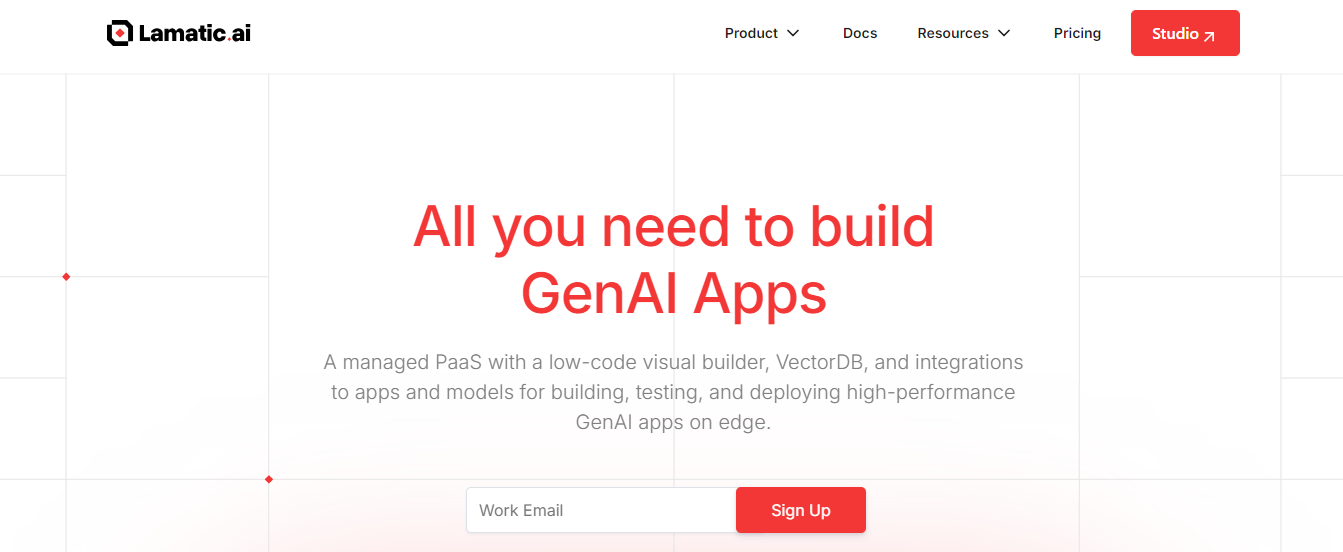
Lamatic offers a managed Generative AI Tech Stack. Our solution provides:
- Managed GenAI Middleware
- Custom GenAI API (GraphQL)
- Low Code Agent Builder
- Automated GenAI Workflow (CI/CD)
- GenOps (DevOps for GenAI)
- Edge deployment via Cloudflare workers
- Integrated Vector Database (Weaviate)
Lamatic empowers teams to rapidly implement GenAI solutions without accruing tech debt. Our platform automates workflows and ensures production-grade deployment on the edge. Start building GenAI apps for free today with our managed generative AI tech stack.
2. SyncMatters: The Integration Solution for Smooth Data Flow
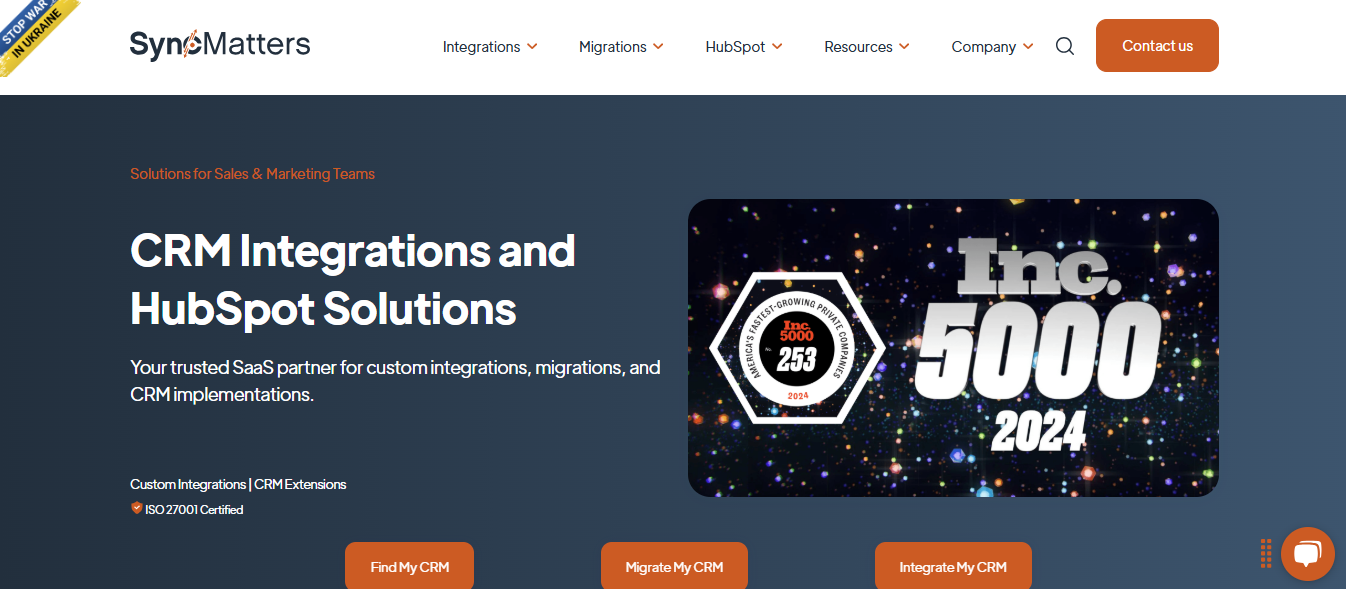
SyncMatters is an integration platform (iPaaS) service designed for integrating, transferring, and managing data within CRM systems. It supports over 45 different systems, allowing you to:
- Move and transform data
- Adjust formats and more
As a leading data integration solution, SyncMatters ensures smooth data flow between platforms, improving operational efficiency and data accuracy.
3. Azure Integration Services: The Microsoft Tool for Application Integrations

Azure Integration Services, developed by Microsoft, is a suite of tools for application integrations. It offers a serverless environment that streamlines the connection of apps, systems, and data with over 600 pre-built connectors and services like:
- Azure API Management
- Logic Apps
- Service Bus
- Event Grid
The platform enables secure integration, automation of business processes, and scalable app development, with built-in security and flexible pay-as-you-go pricing.
4. Boomi: The iPaaS for Seamless Data Integration
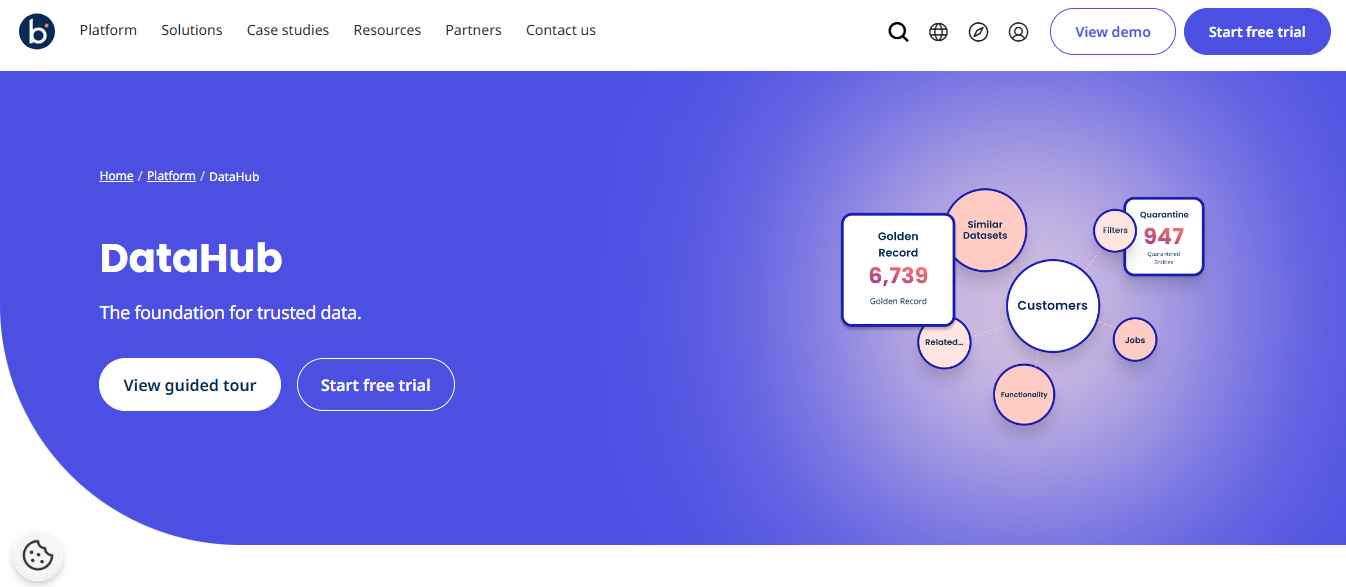
Boomi is a software company specializing in:
- Integration Platforms-as-a-Service (iPaaS)
- API management
- Data solutions
Founded in 2007, Boomi helps organizations streamline data integration with pre-built connectors that simplify data exchange across cloud, on-premises, and edge environments. Its “Suggest” feature uses machine learning to streamline data mapping, while the self-updating platform ensures smooth operation without manual oversight.
Boomi also offers regression-tested integrations and crowdsourced troubleshooting, maintaining 99.99% uptime even during network issues.
5. Workato: The Low-Code Platform for Integration and Automation
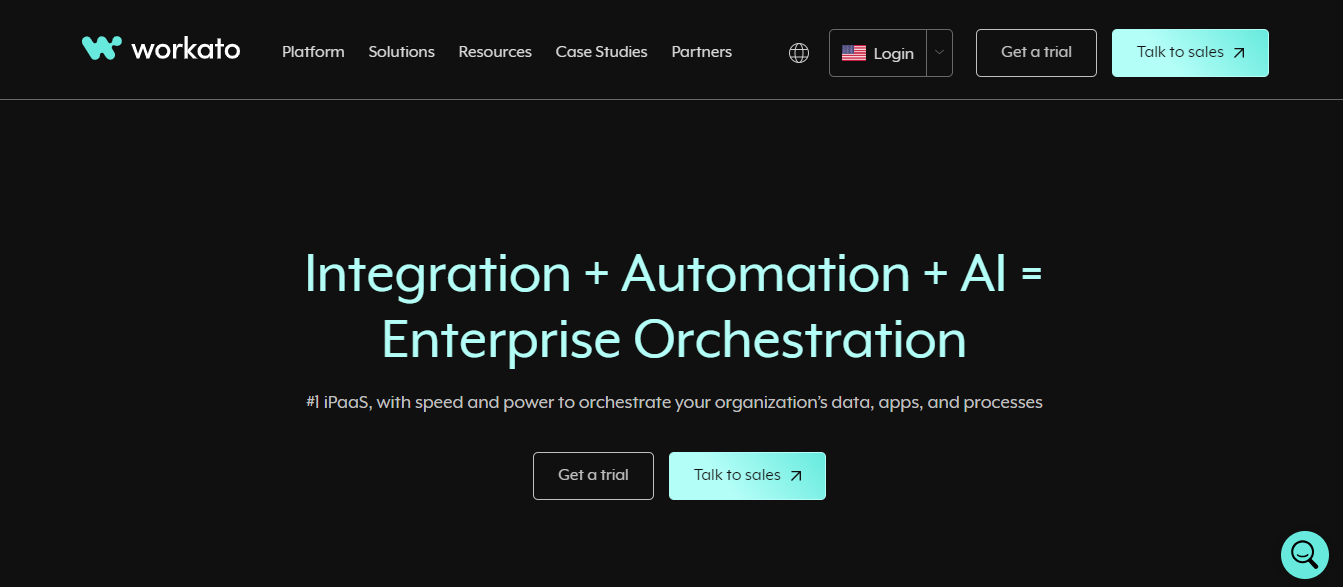
Workato is an advanced integration and workflow automation technology that helps businesses optimize their operations. It provides a low-code/no-code environment where IT and business teams may automate tasks and integrate:
- Apps
- Data
- Workflows
Workato's cloud-native design and simple drag-and-drop interface make it easier to construct APIs and integrations, saving time and money on development. The platform has an extensive library of connectors, automation recipes, and enterprise-level functionality such as:
- Scaling
- Governance
- Error management
6. MuleSoft: The Robust Integration Platform for Connecting Applications
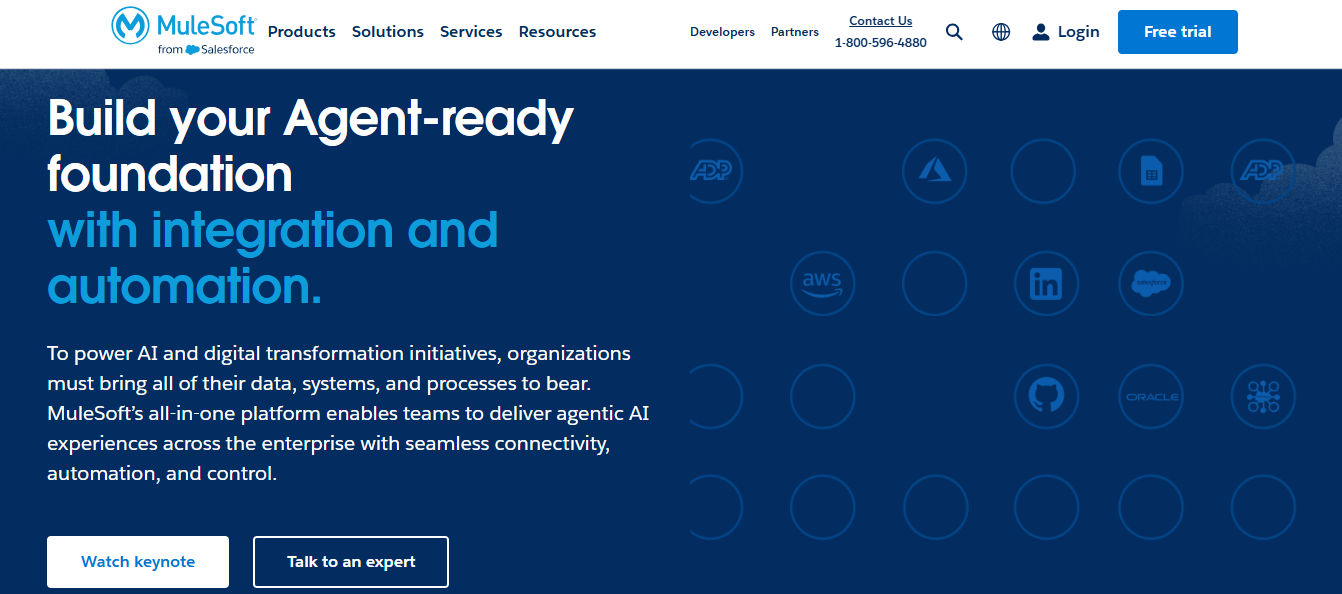
MuleSoft's Anypoint Platform is a robust integration platform built to connect programs, data, and devices across different environments. It provides API management, data integration, and application connectivity capabilities compatible with cloud and on-premises implementations. The platform includes many pre-built connectors and enables smooth API:
- Construction
- Implementation
- Monitoring
7. IBM: The Integration Solution for Connecting Applications and Data
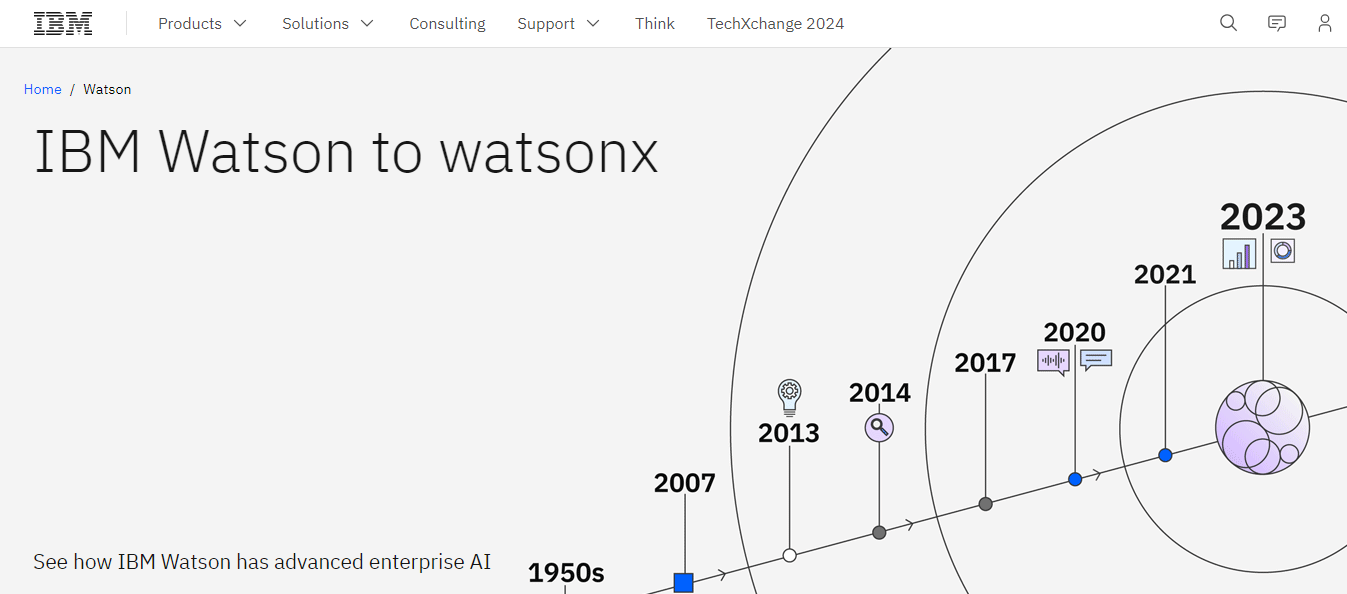
IBM App Connect Enterprise is a top integration platform from IBM that ensures smooth information flow between various applications and platforms, whether on-premises or in the cloud, including AWS.
It allows organizations to quickly connect SaaS applications and build workflows using pre-built connectors and customizable templates.
8. Informatica: The AI-Powered Cloud Data Management Platform
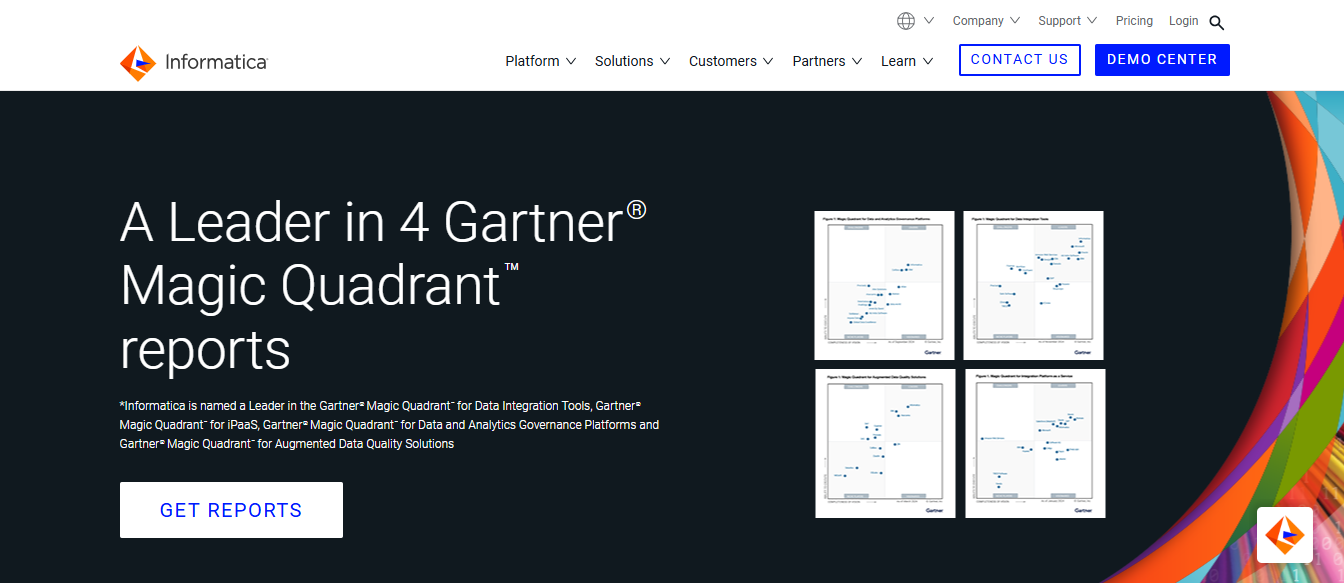
Informatica specializes in cloud data management and integration and offers the AI-powered Informatica Intelligent Data Management Cloud (IDMC). Its platform supports:
- Seamless API and application integration
- Real-time data orchestration
- Intelligent hyper-automation across multi-cloud and hybrid systems.
Informatica automates processes and enhances governance by providing a codeless, user-friendly interface, pre-built connectors, unified integration tools, API creation, and event management. Users trust Informatica in over 100 countries, including 85 of the Fortune 100. It drives efficient business processes and data unification around the world.
9. Oracle Cloud Infrastructure: The Cloud Service for Streamlining Operations

Oracle Cloud Infrastructure (OCI) is a cloud computing service by Oracle that provides on-demand access to servers, storage, networking, and applications via its global data centers. OCI integrates various applications and data sources, such as Salesforce, SAP, Shopify, Snowflake, and Workday, automating workflows and centralizing management.
It offers prebuilt adapters and low-code tools to simplify cloud migration and streamline operations across hybrid and multi-cloud environments.
10. TIBCO: The Hybrid Integration Platform for Accelerating Data Operations
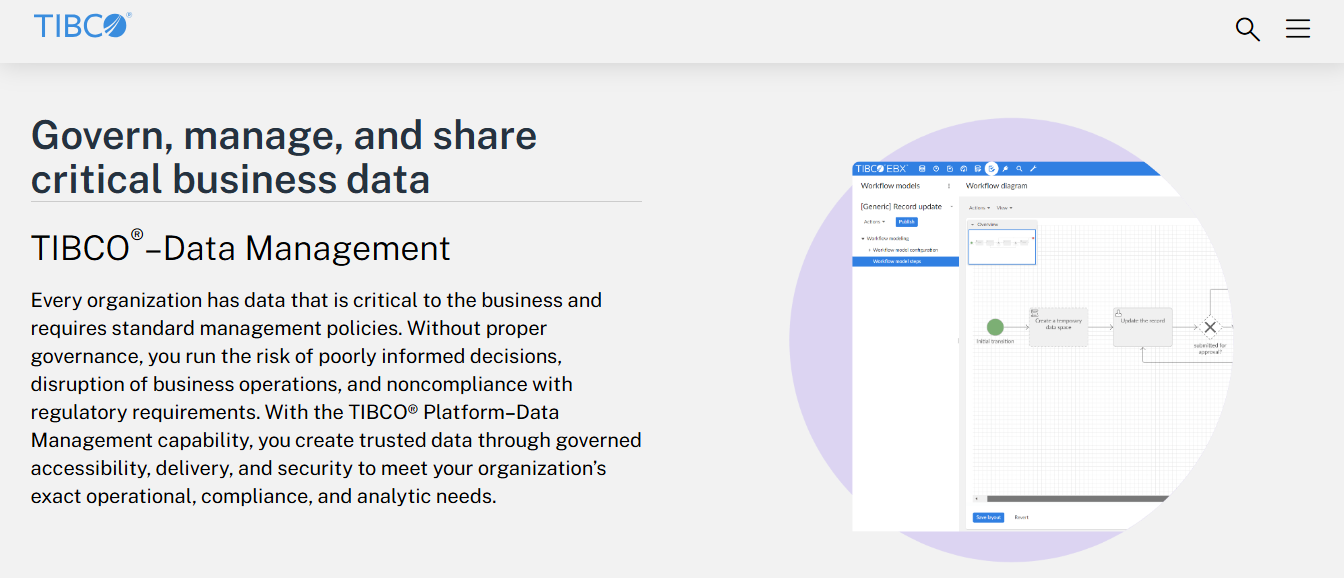
TIBCO Cloud Integration, part of Cloud Software Group, is an iPaaS that accelerates application and data integration across hybrid environments. It is based on the open-source Project Flogo and supports API-led and traditional integration methodologies, reducing costs and accelerating time-to-market.
The platform's graphical interface, powered by TIBCO Scribe, and pre-built connectors make integrating cloud and on-premise applications easy. With its API automation and no-code app development through TIBCO Cloud Live Apps, even non-technical users can build and automate enterprise-grade solutions.
11. Zapier: The No-Code Platform for Automating Workflows
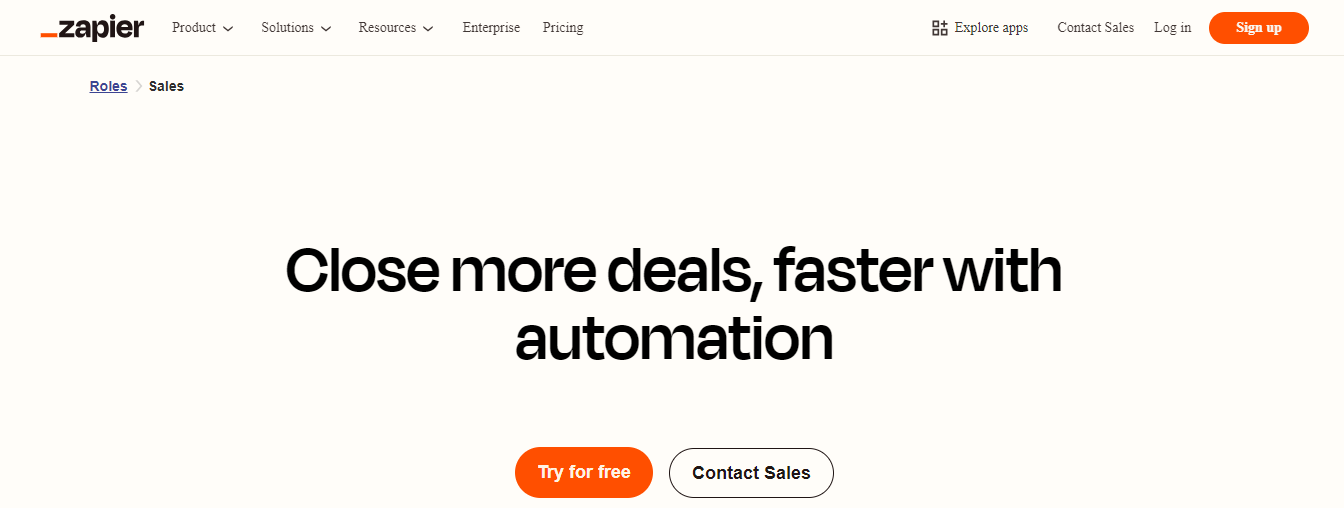
Zapier is an automation platform that helps users integrate different web apps and automate workflows, ensuring data stays updated across an organization. With over 6,000 integrations, Zapier simplifies app connections for better collaboration and data accuracy. Its advanced control options allow users to manage errors and limits, preventing data loss.
Zapier emphasizes security with:
- SOC 2 compliance
- SAML single sign-on (SSO)
- Detailed app permissions
It offers support through live chat, automation strategy calls, and self-guided content like videos and pre-made workflows, empowering businesses to streamline their processes confidently.
Related Reading
- Best No Code App Builders
- LLM vs Generative AI
- Langchain Alternatives
- Autogen vs Langchain
- Langflow vs Flowise
- SLM vs LLM
- Langgraph vs Langchain
- Haystack vs Langchain
- Semantic Kernel vs Langchain
- UiPath Competitors
- Agentic Definition
- AI Developers
- Best AI Models
- Best AI Coding Assistant
- LangChain Agent
- Best AI Code Generator
- AI Developer Tools
Start Building GenAI Apps for Free Today with Our Managed Generative AI Tech Stack
Lamatic offers a managed Generative AI Tech Stack. Our solution provides:
- Managed GenAI Middleware
- Custom GenAI API (GraphQL)
- Low Code Agent Builder
- Automated GenAI Workflow (CI/CD)
- GenOps (DevOps for GenAI)
- Edge deployment via Cloudflare workers
- Integrated Vector Database (Weaviate)
Lamatic empowers teams to rapidly implement GenAI solutions without accruing tech debt. Our platform automates workflows and ensures production-grade deployment on edge, enabling fast, efficient GenAI integration for products needing swift AI capabilities. Start building GenAI apps for free today with our managed generative AI tech stack.





